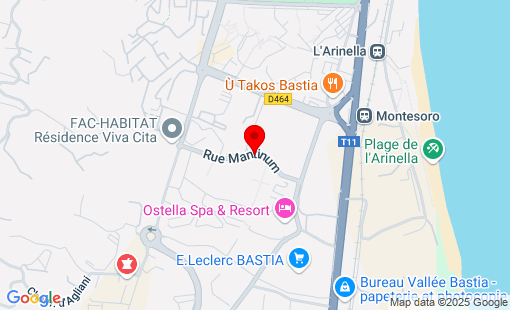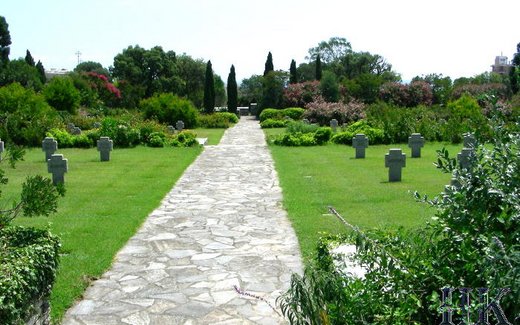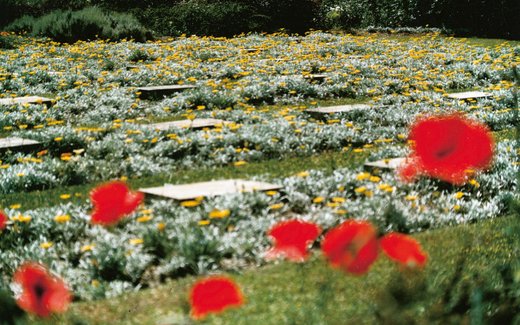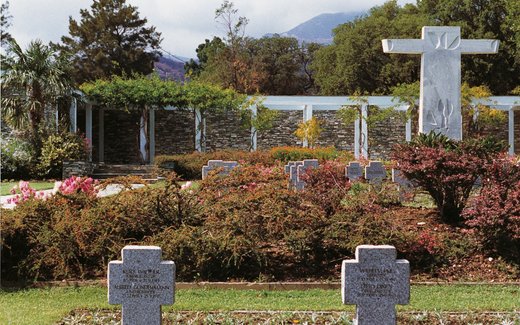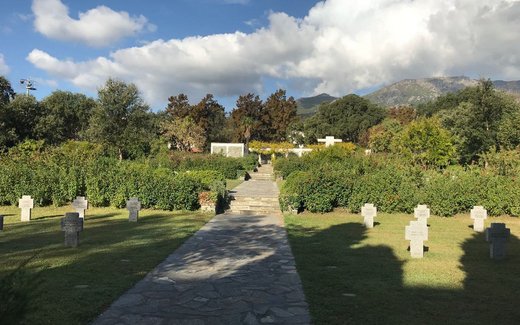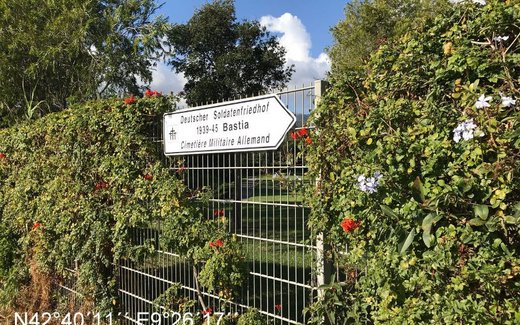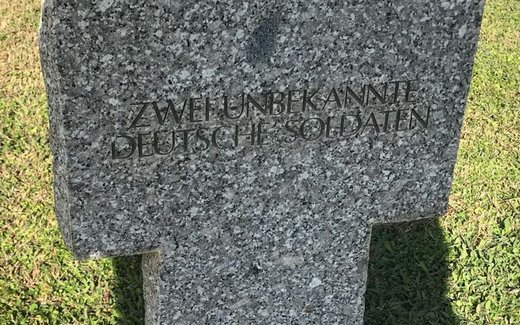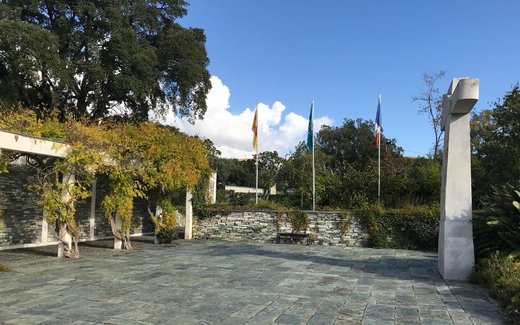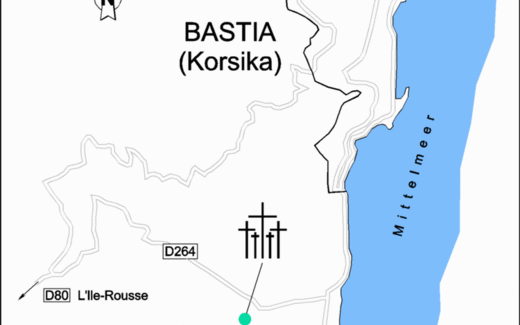The German war cemetery with the dead of the First and Second World Wars is located above a river valley below the Col de Teghine on a slope covered with mighty cork oaks and eucalyptus trees.
Description of the cemetery
The cemetery includes the burial ground and a park. A triangular forecourt, surrounded by walls of green-tinted natural stone, characterizes the entrance area. All the buildings are made of locally quarried limestone, the "Pierre verte de Bastia". The enclosing wall runs along a contour line of the slope, with the cemetery grounds sloping slightly from west to east.
The cemetery of the German soldiers consists of four terraces. A main path paved with natural stone slabs divides the area into eight blocks of graves, each surrounded by a low embankment. The war dead were buried in single rows. Originally, horizontal gravestones made of Obernkirchen sandstone bore the names and dates of life of two of the buried. They were replaced by crosses made of Corsican granite.
The central square is marked by a high cross made of white Carrara marble. It is surrounded by a pergola and a hall containing the lists of names. The path leads through the pergola into an inner courtyard with a farm building and benches. The elevated position offers a view over the cemetery and the high cross with an impressive landscape panorama in the background.
Occupancy
The French island was only the scene of fighting for a short time during the Second World War. Until September 1943, it was mainly occupied by Italian troops, supported by a few German forces. On September 8, 1943, Italy concluded an armistice with the Allies, who advanced from Sicily to the mainland. As a result, the 90th Panzergrenadier Division of the Wehrmacht, stationed on the neighboring island of Sardinia, was transferred to Corsica, but had to leave the island again on 4 October after fierce fighting. The Wehrmacht buried its dead near the municipal cemetery in the south of the town.
The location of this military cemetery on Route National 193 - the most important and largest road in Corsica between Bastia and Ajaccio - prevented the necessary expansion after the war. The Franco-German War Graves Agreement, which came into force in 1954, made it possible to build a new cemetery for all German soldiers who died in Corsica. There are also 28 prisoners of war from the First World War buried there.
History
During the exhumations in 1964, the reburiers of the Volksbund Deutsche Kriegsgräberfürsorge e. V. (German War Graves Commission) also came across graves that had not been known until then and succeeded in identifying many unknown dead.
The cemetery was opened to the public on September 13, 1969.
Three years earlier, the Federal Republic of Germany and the French Republic had concluded another agreement on German war graves on French territory, which replaced the previous agreements.
As the building development of the Corsican capital increasingly encircled the cemetery, the surrounding land was acquired in 1994 in order to preserve the tranquillity and dignity of the cemetery.
The Bastia war cemetery belongs to one of the Volksbund's care districts in France. A member of staff looks after it all year round.
Special feature
The main path runs along a grassy area: the "square of life" surrounded by cypress trees. The path leads to a symbolic watercourse made of gravel and boulders, the "Styx" - named after the river of the dead in ancient Greece. A footbridge leads to the forecourt of the complex, where a hand-forged cemetery map provides orientation.
